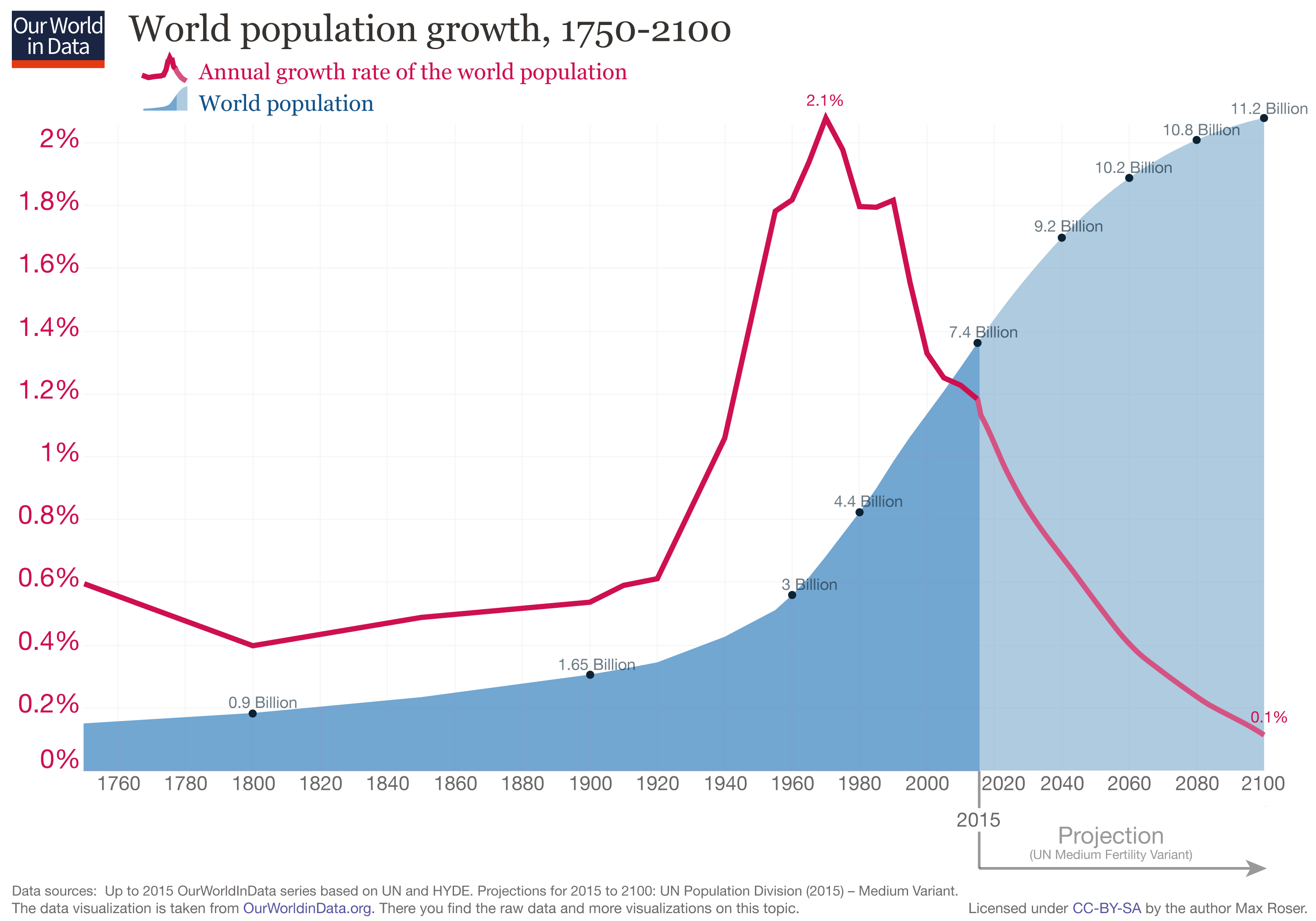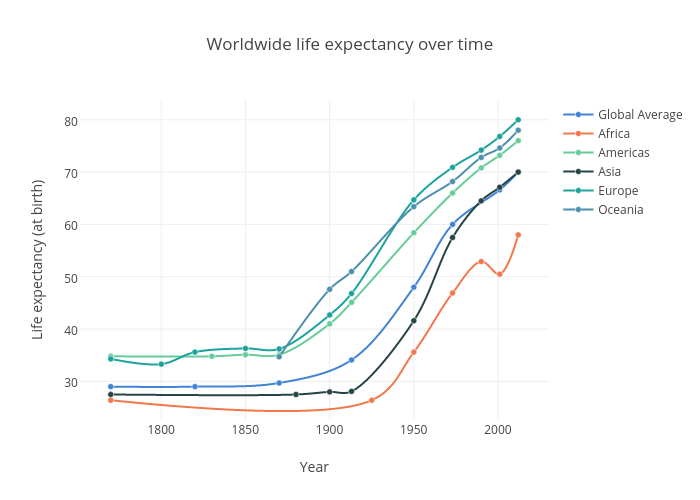The graphs generally align to start/end dates, hence their use. Many other ways to look at the data.
They say the only sure thing in life is death and taxes. Everyone will pass eventually, so that the global population, on a very long scale, is based on birth rate. For population to be “stable” it needs to be about 2.1 children, in order to account for early deaths (i.e. low life expectancy). For a multitude of reasons, the birth rate was such that the overall population growth tended to be around the 0.5% rate per year. Things grow at any rate over 0%, though slowly. The baby boomers are super evident, but also some absolutely massive advances in health care/education that increased life expectancy. People may be anti-vaccine, but the numbers don’t lie – the eradication of polio and wide use of anti-biotics added 20 years to the average life expectancy.
This is an important fact, as when the industrial revolution started the average life span was only 35 globally – 45 in the Americas. Unions and pensions came about just after the baby boom, where life expectancy was closer to 55/65. If you retired at 60, you took a 5 year pension. Geriatric care didn’t really exist as we know it today… there weren’t enough people for it. When the baby boomers “came into power” in the mid-80s there was approximately half the amount of people on the planet, and nearly everyone was their age or younger. This pragmatic statement… non-productive members of society are by definition a drain on society. I am not debating that elders should be rewarded for their years of productivity. It’s a math thing though… you can’t withdraw more than you put in. The “you” in this case is generalized to society.
Today, the birth rate is declining. There are many reasons, most of them tied to the level of education of the population, which is itself tied to infant mortality rates. As people become more educated, they have access to better health care, and have less children. That is a massive simplification.
So we now have a declining birth rate, meaning less people being born and an increasing life expectancy, meaning more non-productive members of society. This will last until the “baby boomer bubble” exceed the life expectancy. In North America, with an expectancy of ~80yrs, that means this will last until 2026-2044. Back to the comment about not withdrawing more than you put in… if baby boomers retiring now think that they are going to get the same “benefits” as their parents, someone is in for a bad time.
The overall global population itself won’t decline as long as there are more people being born than those leaving. Perhaps there’s an interesting bit here where life expectancy in some areas (particularly the US) is actually in decline.
And of course, all of this ignores the upcoming global famine caused 1) supply chain issues (ideally resolved in the next 12 months), 2) the war in Ukraine (people don’t fully realize how BIG a supplier they are) and 3) global warming (this one will kill us because of inaction). But that cheery topic is for another time.


